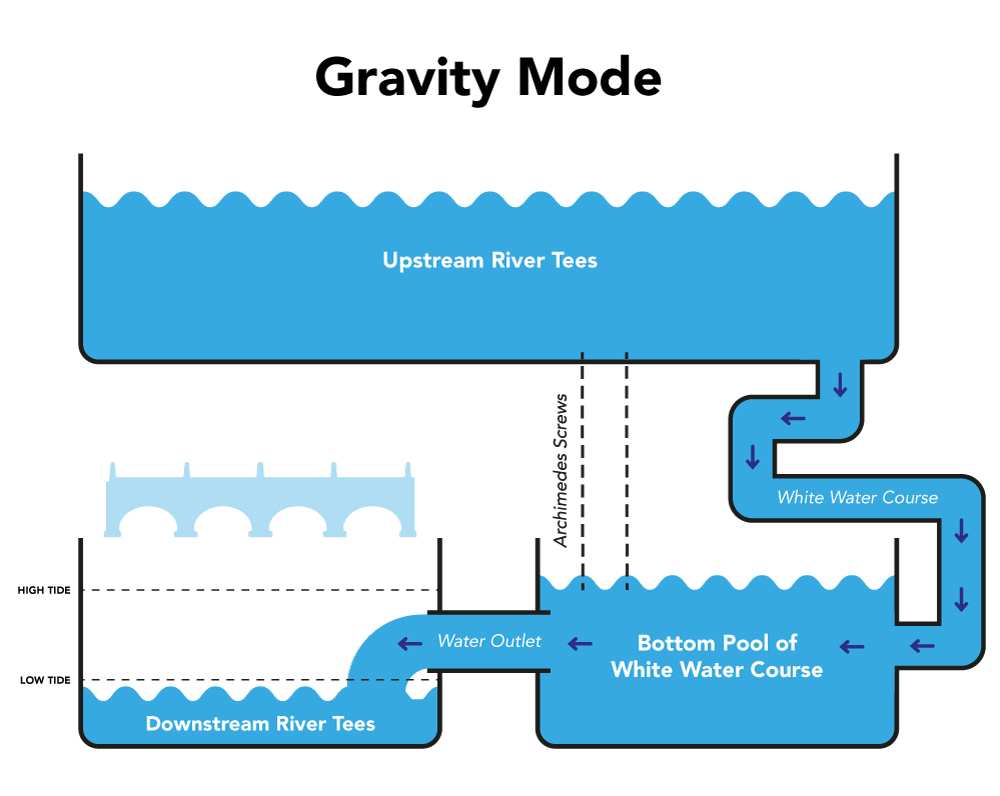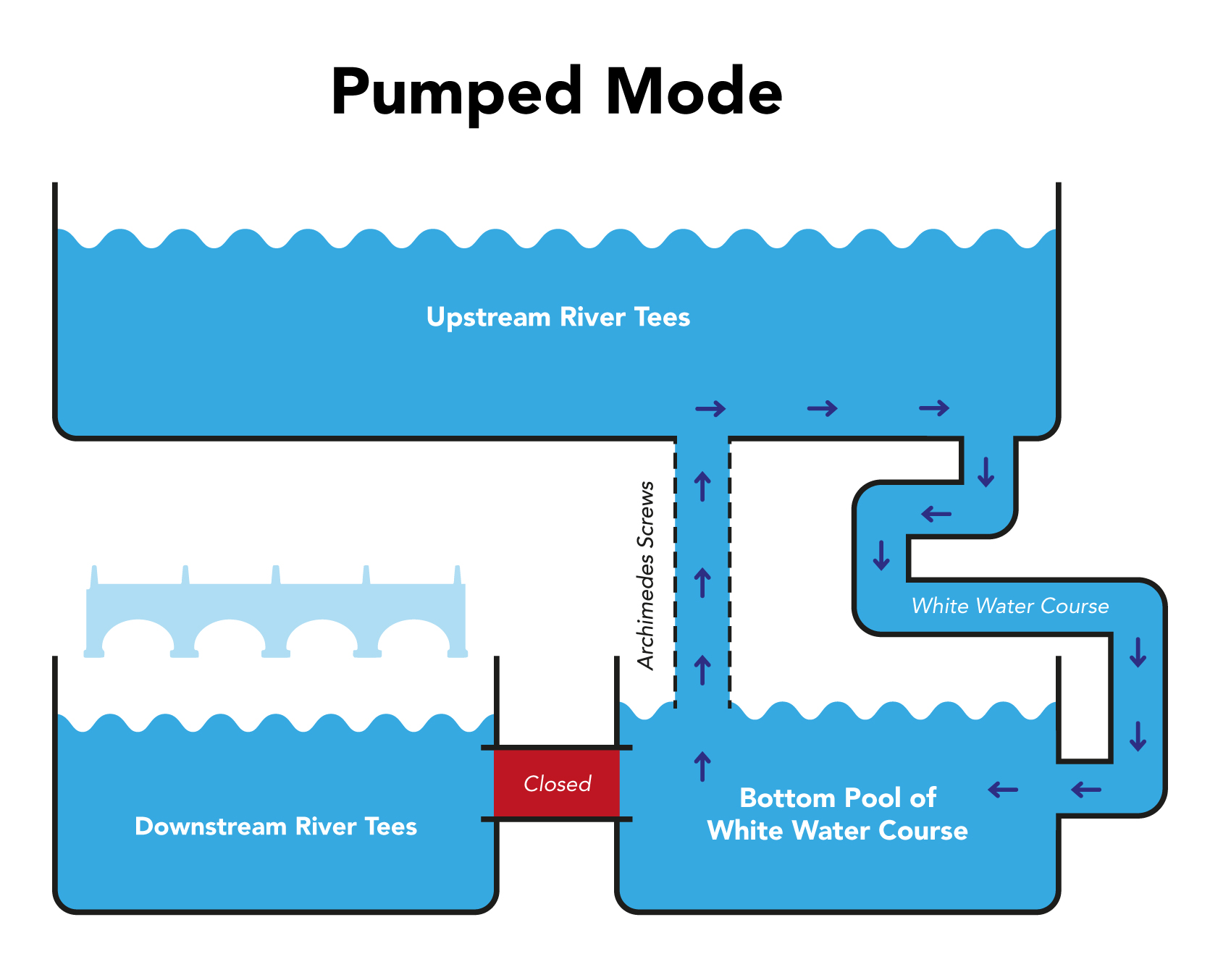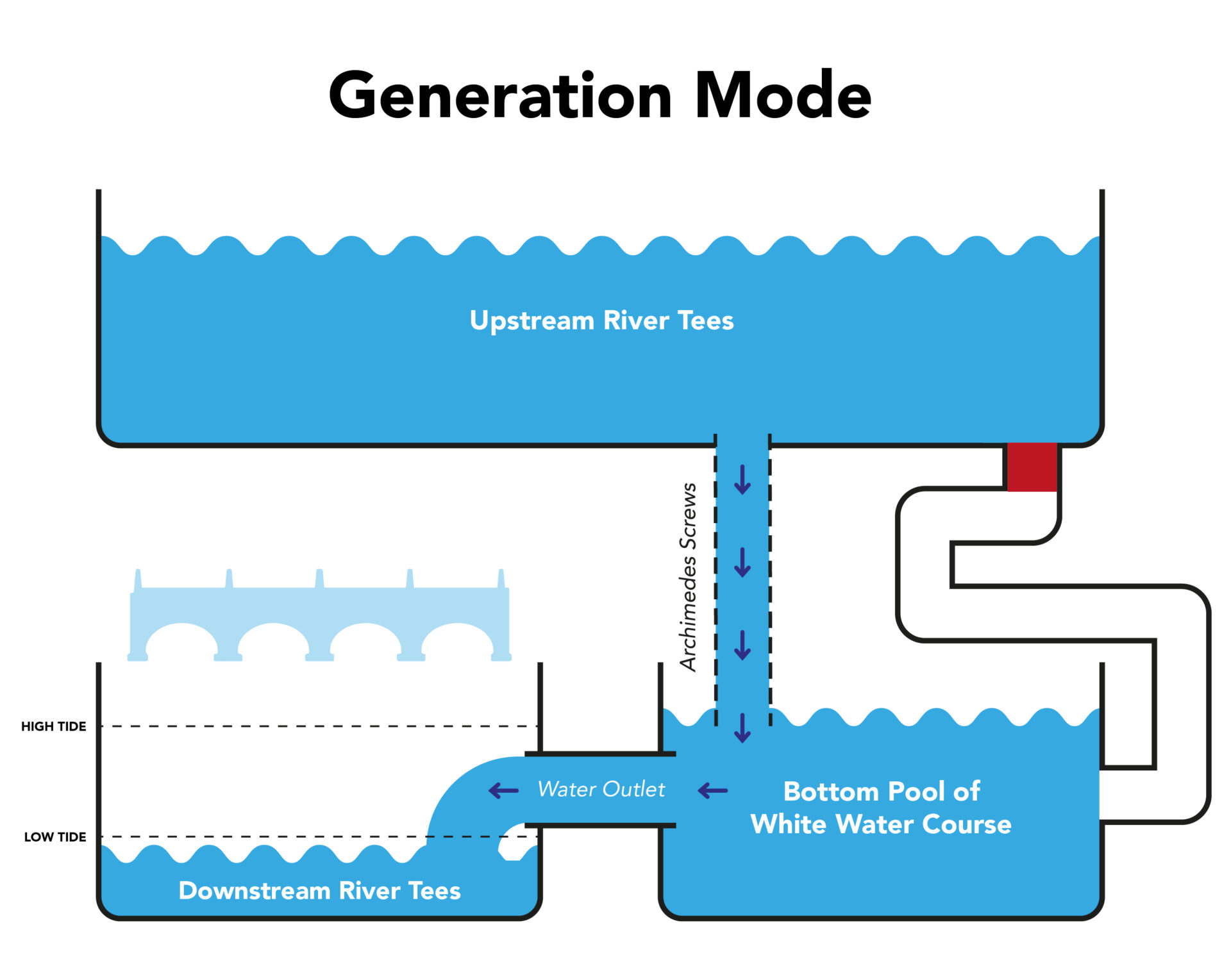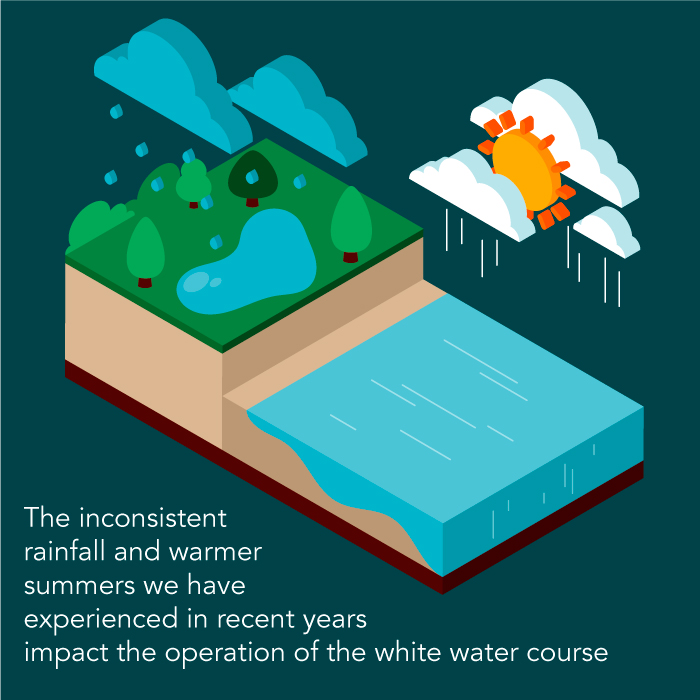Shopping Basket 0 items | £0.00
The Tees Barrage is a complex feat of engineering that balances a multitude of variables to ensure it operates as effectively and efficiently as possible to maintain a safe and vibrant environment on the river.
Sitting alongside the Barrage is the International White Water Course which is popular destination for visitors to enjoy a wide range of watersport activities. Both the Tees Barrage and the white water course (Archimedes screws), are monitored, controlled and operated by Canal & River Trust (CRT) independent of Tees Active who only deliver the watersport activities.
So how does the white water course work? Here comes the technical bit….
The white water course can be operated in three ways:



Unfortunately, it cannot and there are several factors that influence this which are beyond Tees Active’s control…
So how does this affect the operation of the course?
The Canal & River Trust need to maintain water levels within a predefined range upstream of the Barrage. So, when there’s very little rainfall in the dry summer months and river levels start to drop, they need to ensure an adequate level is maintained. Unfortunately, this means that they can’t let any water down the white water course and downstream to the sea meaning the course cannot operate in its preferred Gravity mode. This is why you will sometimes visit and there will be no water flowing down the course – the white water course is a very small component in this much bigger ecosystem.
To provide some context on how much points 1 and 2 affect the white water course…

Archimedes screws are an amazing invention that transport water uphill, or upstream in our case. Each of the 4 Archimedes screws weighs a huge 14 tonnes, and when they are operating, each one transports around 3.8 tonnes of water every second. So, as you can imagine, it takes an enormous amount of energy to move the weight of the screws and shift the water to operate in Pumped mode.
Don’t the Archimedes screws generate electricity to pay for the energy the course needs to operate in Pumped mode?
Sadly not! It’s a common misconception and has never been the case unfortunately! As mentioned earlier, the Archimedes screws can generate electricity when the conditions are favourable, meaning only when the tide is out and river levels upstream are sufficiently high enough to allow water to pass through them and downstream – Generation mode.
With ever changing and more erratic climate conditions over the past few years it has meant there has been a steady decline in the amount of electricity that can be generated. The Canal & River Trust computers at the Barrage automatically determine if the conditions are suitable to allow the Archimedes screws to generate power, a process that works independently of Tees Active.
The power that is generated is then used by the Canal & River Trust to operate the entire Tees Barrage operation, excluding the watersports centre. It is only after this that any surplus can then be sold back to the national grid, which then provides a fraction of income to offset the cost of operating the screws. Anyone who has solar panels at home will be aware that the amount of energy companies pay you for the electricity you’ve generated is significantly less than the cost to purchase it back – such as when we need to operate the Archimedes screws to operate in Pumped mode.
What does all this mean for energy costs and how does it affect the operation of the course?
Faced with fewer opportunities to operate in Gravity and Generation modes means the costs to operate the course have increased, and our ability to obtain income from Generation mode have diminished further. If that wasn’t bad enough, just like every business and homeowner in the UK, we have seen energy costs triple and further rises are anticipated.
That means the cost to operate the course in Pumped mode is constantly being reviewed to create an affordable and balanced programme to provide opportunities for watersport activities so we can all keep enjoying this amazing facility!
As you can see, the Tees Barrage is a complex site! From flood risks, wildlife and tides, to fish migration, rainfall and watersports, there is a huge amount of work that goes into running this facility!
Follow us on social media for all the latest on what’s going on at Tees Barrage @teeswhitewater.